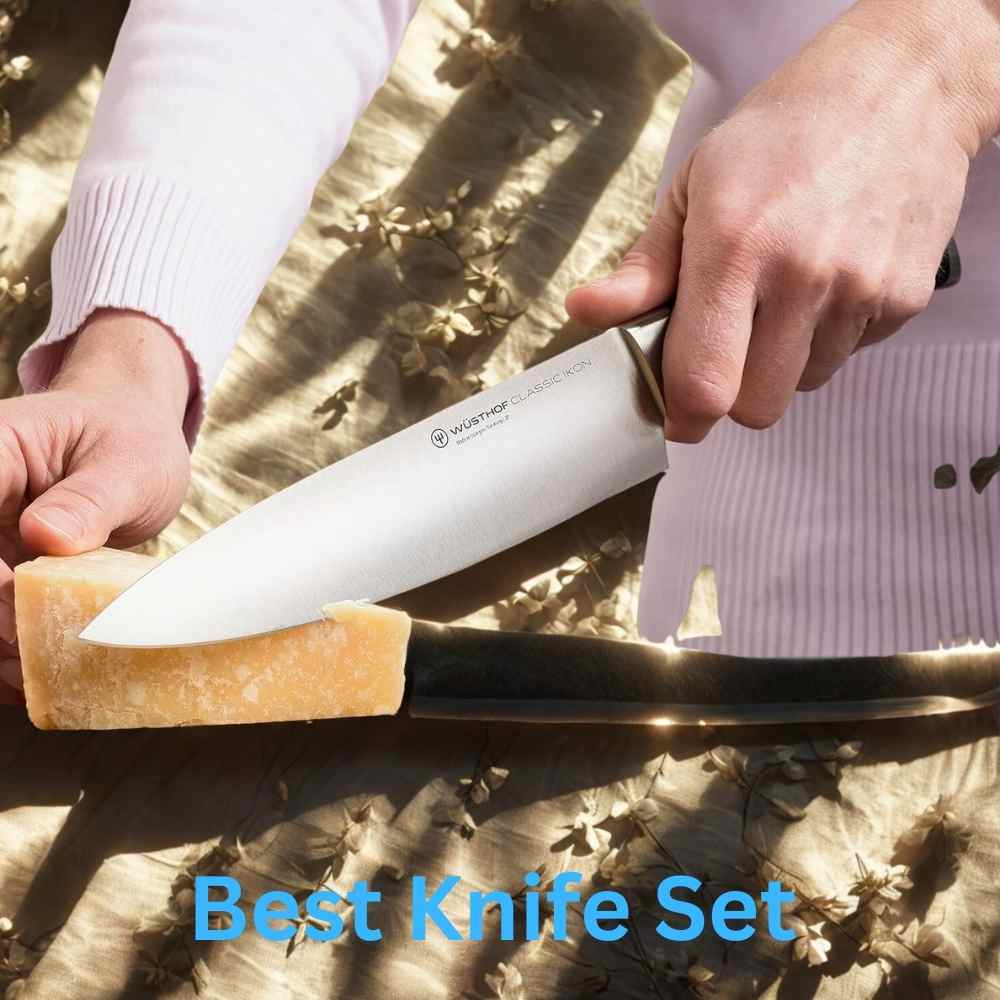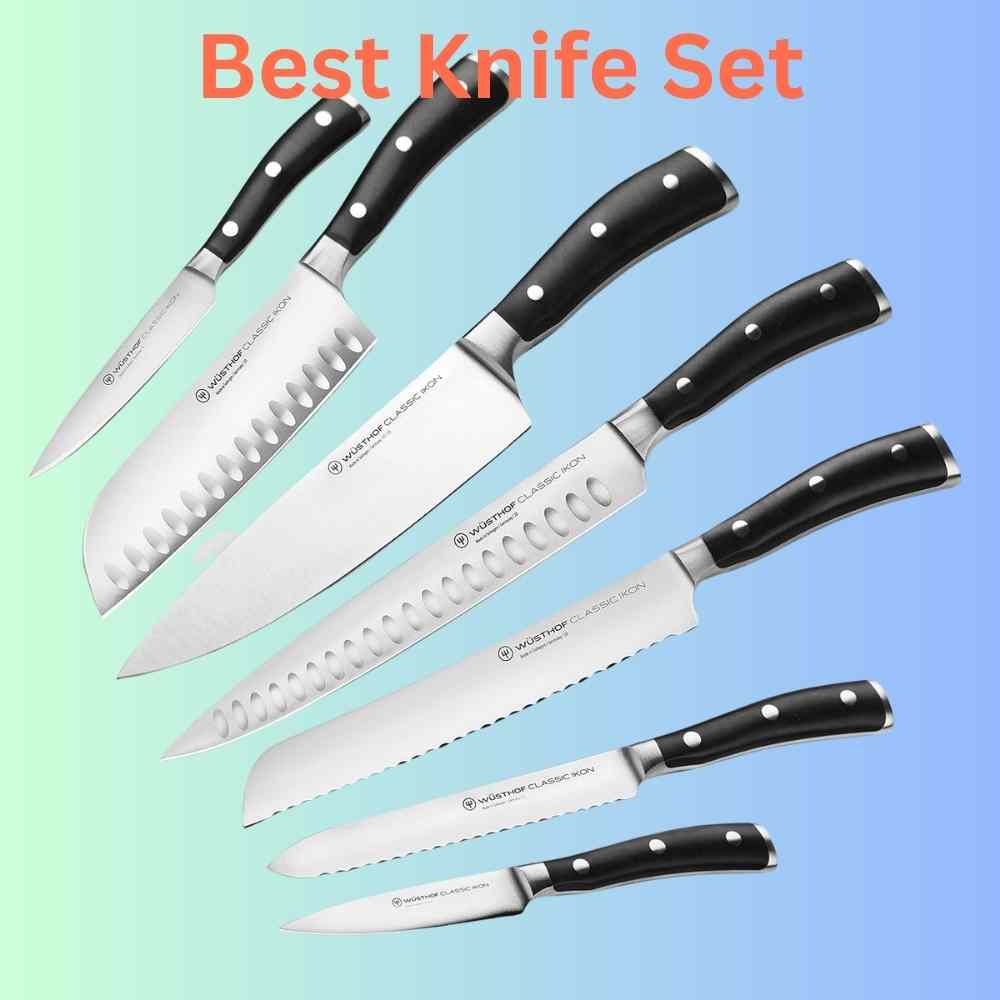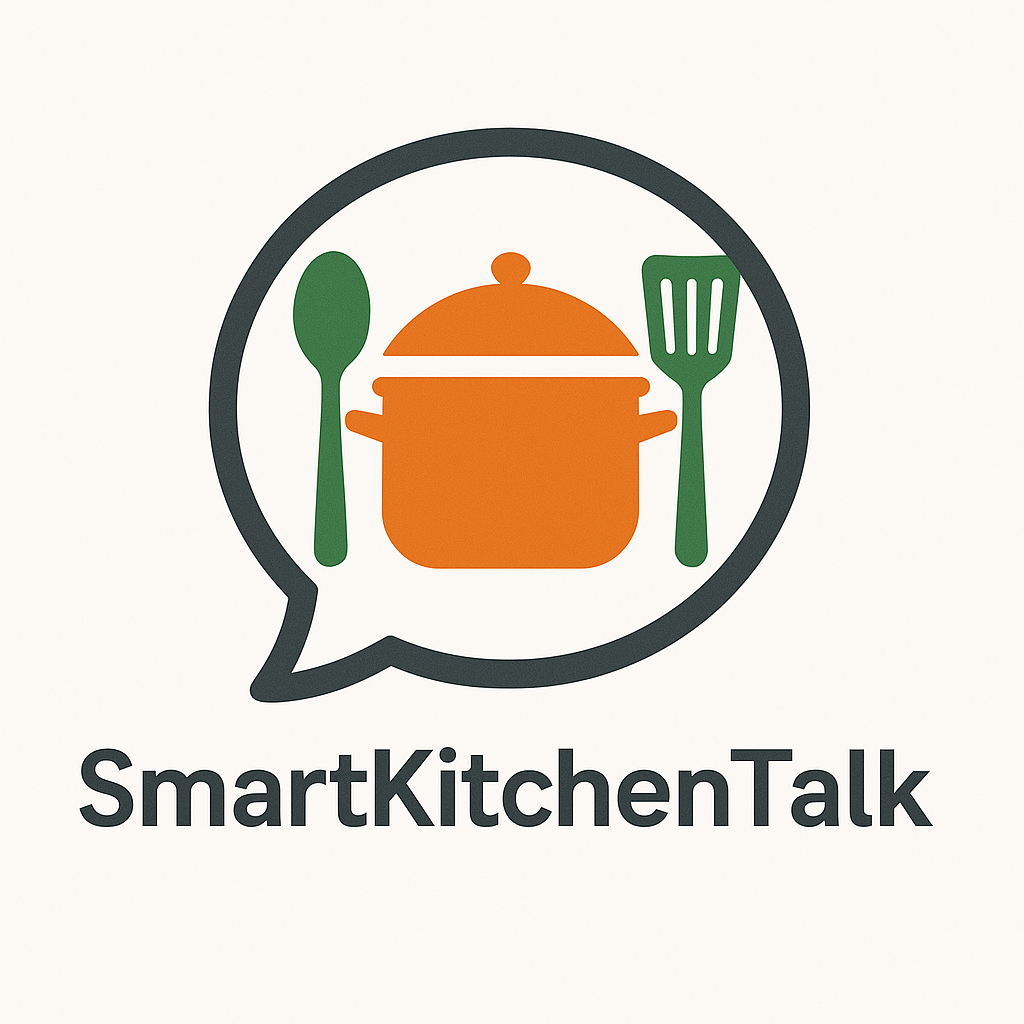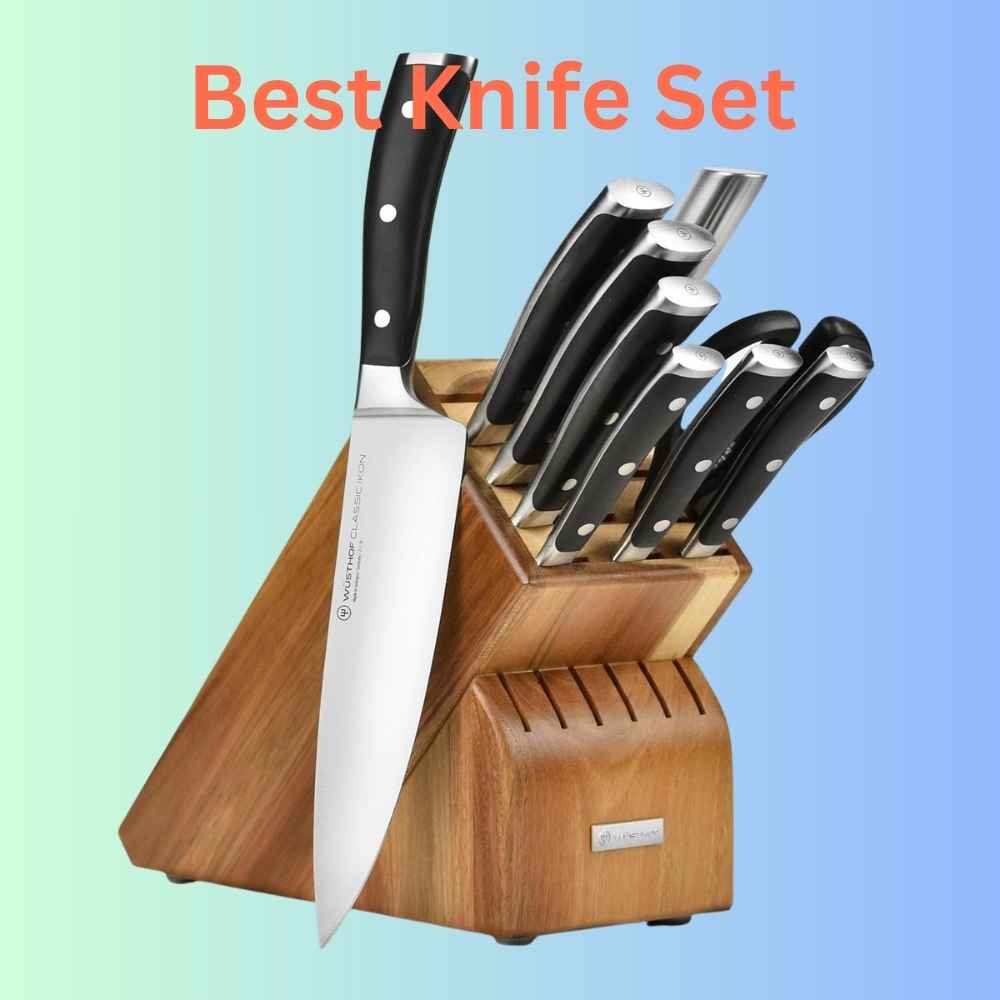Walk into any kitchen, and you’ll find one tool that gets more use than any gadget, pan, or appliance: the knife. From slicing vegetables to carving a roast chicken, knives do the heavy lifting. But here’s the truth: most people don’t realise: the right set of knives can make cooking easier, faster, and even more enjoyable.
The problem? Shopping for a knife set can feel overwhelming. Do you really need fifteen pieces in a bulky wooden block, or are three quality blades enough? Should you invest in German craftsmanship, or try the sleek sharpness of Japanese steel? And how much should you spend to get knives that actually last?
That’s where this guide comes in. I’ve pulled together research, expert reviews, and hands-on experience to break down the best knife sets in 2025, with detailed descriptions of what makes each one stand out. Along the way, I’ll also explain the key things to look for—so whether you’re a beginner stocking your first kitchen or an experienced cook ready to upgrade, you’ll know exactly which knives are worth your money.
Why You Don’t Need Every Knife in the Block
It’s tempting to grab a huge 15-piece set and feel like you’re ready for anything. But if you ask professional chefs, most will tell you the same thing: you can handle 90% of kitchen tasks with just three knives.
- Chef’s knife: The workhorse. Great for chopping, slicing, dicing, mincing—you name it.
- Paring knife: A small but mighty blade that excels at peeling, trimming, and detailed work.
- Bread knife: With its serrated edge, it slices through crusty loaves or soft cakes without crushing them.
Of course, a full set can be convenient, especially if you cook daily and want everything within reach. Steak knives, boning knives, and carving knives do come in handy—but they’re often optional, not essential. That’s why the best sets aren’t just about how many knives you get, but how well each knife is designed.
Best Knife Sets of 2025
Here’s a closer look at the knife sets that stand out this year. I’ve included a mix of premium options, starter sets, and budget-friendly picks, so you can find the right match for your cooking style.
1. Wüsthof Classic 10-Piece Knife Block Set
If you want a set that screams tradition and reliability, Wüsthof’s Classic line is hard to beat. This German brand has been making knives in Solingen (known as the “City of Blades”) since 1814, and their craftsmanship shows.
Why it’s great:
- The chef’s knife comes razor sharp out of the box, with a forged blade that feels solid and balanced in your hand.
- The paring knife is nimble, perfect for coring strawberries or peeling apples.
- The set also includes kitchen shears, a honing steel, and a full row of steak knives—so you’re covered from meal prep to dinner table.
Who it’s for: Home cooks who want a lifetime set they can sharpen and use for decades. Wüsthof knives aren’t cheap, but they’re the kind you pass down.
2. Mac Professional Series 3-Piece Knife Set
Minimalist cooks, take note: this is a small set with big performance. The Mac Professional series blends Japanese precision with Western ergonomics, creating knives that are thin, sharp, and versatile.
Why it’s great:
- The chef’s knife slices through onions and carrots with almost no resistance, thanks to its thinner blade.
- The bread knife has an extra-long 10.5-inch blade that glides through crusty sourdough without tearing.
- The paring knife is compact but sharp enough for delicate tasks like deveining shrimp.
Who it’s for: Cooks who believe in quality over quantity. If you want three knives that do everything exceptionally well, this set is worth every penny.
3. Shun Classic 3-Piece Knife Set
Think of this as the luxury sports car of knife sets: sleek, beautiful, and razor sharp. Made in Japan, Shun knives feature a VG-MAX steel core wrapped in 68 layers of Damascus stainless steel. The result? Stunning blades with a wavy, patterned finish that perform as beautifully as they look.
Why it’s great:
- The chef’s knife feels lighter than German knives, making it easier for long prep sessions.
- The paring knife is thin and precise, almost like a scalpel for vegetables.
- The bread knife’s serrations are designed to cut cleanly without shredding softer foods like tomatoes.
Who it’s for: Home chefs who value both performance and aesthetics. Shun knives make you want to cook, simply because they’re a joy to use.
4. Wüsthof Ikon 6-Piece Starter Set
Not everyone needs a huge block of knives, but some cooks want a little more than just three. That’s where Wüsthof’s Ikon line shines.
Why it’s great:
- Includes the three essentials plus a utility knife, kitchen shears, and a honing steel.
- The handles are contoured from African blackwood, giving them a luxurious feel.
- The forged construction makes them sturdy without being too heavy.
Who it’s for: Serious home cooks who want a balance between a minimalist set and a full block.
5. Misen 7-Piece Knife Set
Misen has made a name for itself as a direct-to-consumer brand that offers chef-quality knives at a more affordable price.
Why it’s great:
- The set includes the core trio plus extras like a santoku knife and utility knife.
- Made with Japanese AUS-10 high-carbon steel, these knives hold their edge impressively well.
- The modern block design looks great on the counter.
Who it’s for: Anyone who wants a well-rounded set without spending a fortune.

Budget-Friendly Knife Sets Worth Considering
Not everyone wants to invest hundreds of dollars in a premium set. If you’re just starting out, furnishing a new kitchen, or simply cooking a few times a week, there are plenty of solid budget options that give you quality without the high price tag.
Chicago Cutlery Essentials 15-Piece Knife Set
Chicago Cutlery has been a go-to for affordable knives for decades, and their Essentials set offers a surprising amount of value.
Highlights:
- Comes with a wide range of blades: chef’s, utility, paring, bread, steak knives, and even kitchen shears.
- High-carbon stainless steel resists staining and holds a decent edge.
- The wooden block is compact, so it fits easily on most counters.
This set won’t last forever like Wüsthof or Shun, but for under $100, it’s a reliable way to cover all your bases without stretching your budget.
Carote 14-Piece Knife Set
Carote is best known for its nonstick cookware, but this knife set has earned a cult following thanks to its design and sharpness.
Highlights:
- Modern, matte finish handles that feel comfortable and secure.
- The set includes all the basics, plus steak knives.
- Often available for $50–$70 on Amazon, making it one of the best bargains you’ll find.
For beginner cooks or college apartments, this set feels like a steal. It won’t compete with Japanese Damascus steel, but it slices smoothly and looks stylish on a budget.
Mercer Culinary Renaissance 5-Piece Magnetic Board Set
Mercer is a favourite among culinary students because it delivers professional-level sharpness at entry-level prices.
Highlights:
- Comes with a chef’s knife, paring knife, utility knife, bread knife, and boning knife.
- Instead of a bulky block, the set uses a magnetic wood board for storage. It looks modern and saves counter space.
- Full-tang construction makes these knives durable, with handles that mimic pricier brands.
This is a fantastic pick if you want a leaner set that doesn’t skimp on performance.
How to Choose the Right Knife Set
Buying a knife set is a big investment, and it’s easy to get caught up in numbers—how many knives, how many pieces, how many “extras.” But more isn’t always better. Here are the factors that matter most.
1. Blade Material
- High-Carbon Stainless Steel: Strong, sharp, and rust-resistant. The most common choice for premium knives.
- Damascus Steel: Layers of steel folded together, offering sharpness and beauty. Often found in Japanese knives.
- Ceramic: Ultra-light and razor sharp, but prone to chipping. Good for vegetables but not bones or frozen foods.
2. Construction
- Forged knives are crafted from a single piece of steel. They tend to be heavier, stronger, and more balanced.
- Stamped knives are cut from a sheet of steel. They’re lighter and cheaper but often less durable.
3. Handle Comfort
The best knife is the one you’ll actually enjoy holding. Try to choose handles that fit your hand comfortably—whether that’s the sleek pakkawood of Shun or the sturdy synthetic grip of Wüsthof.
4. Set Size
Ask yourself honestly: how many knives will you use? If you mostly cook family meals, a 3- to 6-piece starter set may be enough. If you regularly host dinners or cook a wide range of cuisines, a 10- or 12-piece set with steak knives could make sense.
5. Budget vs. Longevity
A $70 set might last a few years. A $400 set could last a lifetime. Consider whether you want a short-term solution or a long-term investment.

Knife Set Comparison Table
Here’s a quick side-by-side look to help you decide:
| Set | Price Range | Pieces | Best For | Standout Feature |
|---|---|---|---|---|
| Wüsthof Classic 10-Piece | $$$$ | 10 | Lifelong investment | German forged quality |
| Mac Professional 3-Piece | $$$ | 3 | Minimalist cooks | Thin, razor-sharp blades |
| Shun Classic 3-Piece | $$$$ | 3 | Luxury aesthetics | Damascus-pattern steel |
| Wüsthof Ikon 6-Piece | $$$ | 6 | Balanced starter set | African blackwood handles |
| Misen 7-Piece | $$ | 7 | Affordable all-rounder | Direct-to-consumer pricing |
| Chicago Cutlery Essentials | $ | 15 | Budget kitchens | Large block, low cost |
| Carote 14-Piece | $ | 14 | Beginners/college | Stylish budget set |
| Mercer Renaissance 5-Piece | $$ | 5 | Culinary students | Magnetic board storage |
Knife Care and Maintenance
Even the best knife set won’t perform if it’s neglected. Here’s how to keep yours sharp and safe.
- Hand Wash Only
Dishwashers are the enemy of good knives. The heat and detergent dull blades and damage handles. Wash with warm, soapy water and dry immediately. - Use the Right Cutting Surface
Stick to wooden or plastic cutting boards. Glass, marble, or ceramic surfaces will chip your edge. - Regular Honing
Honing isn’t sharpening—it realigns the blade’s edge. A quick pass with a honing steel before cooking keeps your knives performing their best. - Sharpen Periodically
Even high-end blades dull with use. Depending on frequency, sharpen every 6–12 months with a whetstone or professional service. - Proper Storage
Knife blocks, magnetic strips, or blade guards prevent dulling and accidents. Never toss knives loose in a drawer.
Which Knife Set Is Right for You?
At the end of the day, the “best” knife set depends on what you need most in your kitchen.
- If you want a long-term investment, go with German classics like the Wüsthof Classic 10-Piece or the elegant Wüsthof Ikon 6-Piece. These knives are built to last for decades.
- If you prefer minimalism with maximum performance, the Mac Professional 3-Piece or Shun Classic 3-Piece will serve you better than any oversized block.
- If you’re looking for budget-friendly reliability, start with the Chicago Cutlery Essentials 15-Piece or the trendy Carote 14-Piece—perfect for beginners, students, or casual cooks.
- For a balance of value and sharpness: The Misen 7-Piece and Mercer Culinary 5-Piece sets shine as modern alternatives that combine affordability with pro-level performance.
Remember: a good knife set isn’t just about the number of blades you get. It’s about having knives that feel comfortable, stay sharp, and actually make you want to cook more often.
Cooking should never feel like a struggle. With the right set of knives, prepping ingredients becomes smoother, safer, and far more enjoyable. Think of it as an investment not just in tools, but in your everyday cooking experience.
FAQs About Knife Sets
Q: Do I need a knife set, or should I just buy individual knives?
A: If you’re serious about cooking and want a matching set with convenient storage, a block is handy. But if you only cook occasionally, investing in one or two high-quality knives may be smarter.
Q: How long should a good knife set last?
A: With proper care, a forged steel set like Wüsthof or Shun can last decades—even a lifetime. Budget sets typically last 3–5 years before dullness or handle wear becomes an issue.
Q: What’s the difference between German and Japanese knives?
A: German knives (Wüsthof, Henckels) are heavier and built for durability. Japanese knives (Shun, Mac) are lighter, sharper, and designed for precision. Your cooking style should guide your choice.
Q: Should I buy a self-sharpening knife set?
A: They’re convenient and keep edges serviceable, but they won’t replace professional sharpening. Great for casual cooks who don’t want to fuss with honing.
Q: Are steak knives necessary?
A: Not essential, but nice to have if you often serve meat at the table. Many premium sets include them, while minimalist sets skip them.
Conclusion
Choosing a knife set isn’t just about filling up a wooden block—it’s about finding the blades that make your time in the kitchen more enjoyable. Whether you’re drawn to the timeless strength of Wüsthof, the precision of Shun, or the budget-friendliness of Carote, the best knife set for you is the one that fits your cooking style, your budget, and your long-term goals.
Invest wisely, care for your knives properly, and you’ll never struggle with dull blades or clunky prep work again. In fact, with the right knife set at your side, you may find that cooking becomes one of the most satisfying parts of your day.

